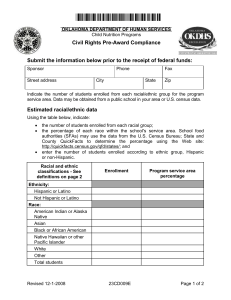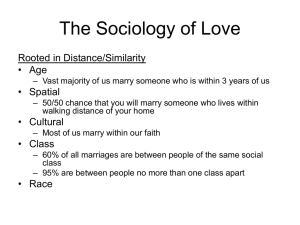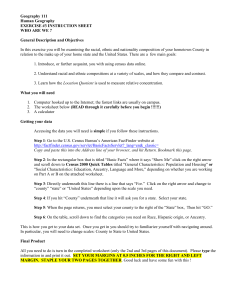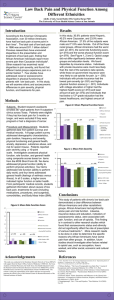Ethnic Categories
advertisement
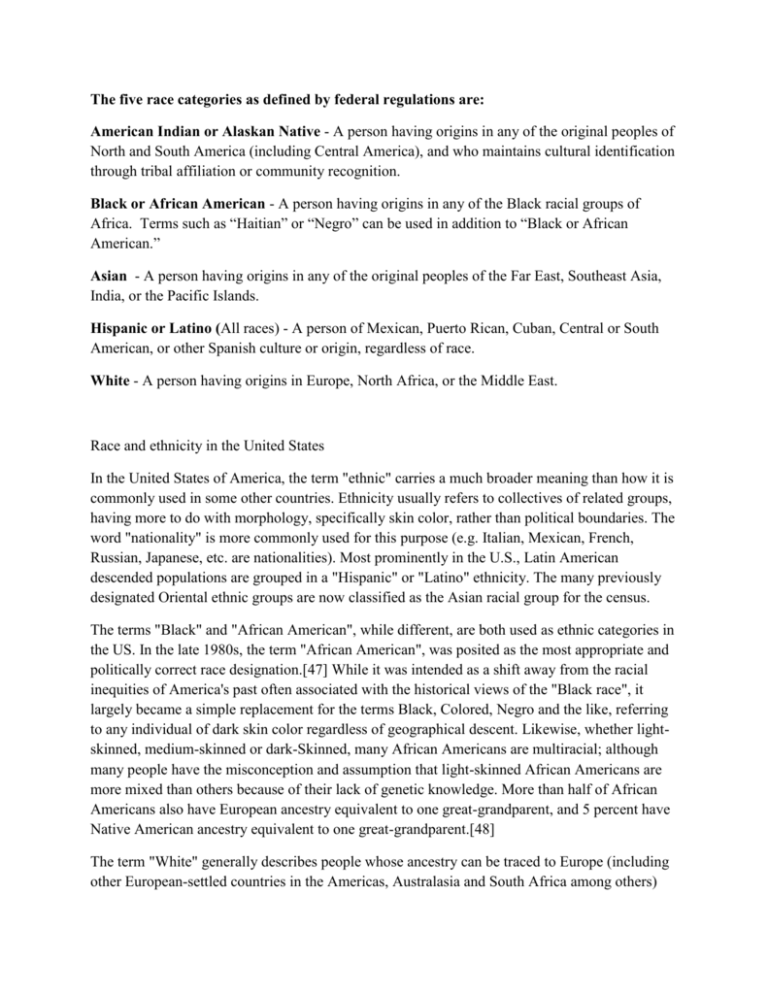
The five race categories as defined by federal regulations are: American Indian or Alaskan Native - A person having origins in any of the original peoples of North and South America (including Central America), and who maintains cultural identification through tribal affiliation or community recognition. Black or African American - A person having origins in any of the Black racial groups of Africa. Terms such as “Haitian” or “Negro” can be used in addition to “Black or African American.” Asian - A person having origins in any of the original peoples of the Far East, Southeast Asia, India, or the Pacific Islands. Hispanic or Latino (All races) - A person of Mexican, Puerto Rican, Cuban, Central or South American, or other Spanish culture or origin, regardless of race. White - A person having origins in Europe, North Africa, or the Middle East. Race and ethnicity in the United States In the United States of America, the term "ethnic" carries a much broader meaning than how it is commonly used in some other countries. Ethnicity usually refers to collectives of related groups, having more to do with morphology, specifically skin color, rather than political boundaries. The word "nationality" is more commonly used for this purpose (e.g. Italian, Mexican, French, Russian, Japanese, etc. are nationalities). Most prominently in the U.S., Latin American descended populations are grouped in a "Hispanic" or "Latino" ethnicity. The many previously designated Oriental ethnic groups are now classified as the Asian racial group for the census. The terms "Black" and "African American", while different, are both used as ethnic categories in the US. In the late 1980s, the term "African American", was posited as the most appropriate and politically correct race designation.[47] While it was intended as a shift away from the racial inequities of America's past often associated with the historical views of the "Black race", it largely became a simple replacement for the terms Black, Colored, Negro and the like, referring to any individual of dark skin color regardless of geographical descent. Likewise, whether lightskinned, medium-skinned or dark-Skinned, many African Americans are multiracial; although many people have the misconception and assumption that light-skinned African Americans are more mixed than others because of their lack of genetic knowledge. More than half of African Americans also have European ancestry equivalent to one great-grandparent, and 5 percent have Native American ancestry equivalent to one great-grandparent.[48] The term "White" generally describes people whose ancestry can be traced to Europe (including other European-settled countries in the Americas, Australasia and South Africa among others) and who now live in the United States. Middle Easterners may sometimes also be included in the "white" category. This includes people from Southwest Asia and North Africa, as well as the Arab nations, Iran, Afghanistan, and Pakistan. All the aforementioned are categorized as part of the "White" racial group, as per US Census categorization. This category has been split into two groups: Hispanics and non-Hispanics (e.g. White non-Hispanic and White Hispanic.) Although people from East Asia may typically have light skin, they are not considered "white" due to their mongoloid origin, which reflects upon the socially-constructed nature of racial groups. What Racial Categories Will Be Used in Current Surveys and Other Data Collections by the Census Bureau? By January 1, 2003, all current surveys must comply with the 1997 revisions to the Office of Management and Budget's standards for data on race and ethnicity, which establish a minimum of five categories for race: American Indian or Alaska Native, Asian, Black or African American, Native Hawaiian or Other Pacific Islander, and White. Respondents will be able to select one or more of these racial categories. The minimum categories for ethnicity will be Hispanic or Latino and Not Hispanic or Latino. Tabulations of the racial categories will be shown as long as they meet agency standards for data quality and confidentiality protection. For most surveys, however, tables will show data at most for the White, Black, and Asian populations.

